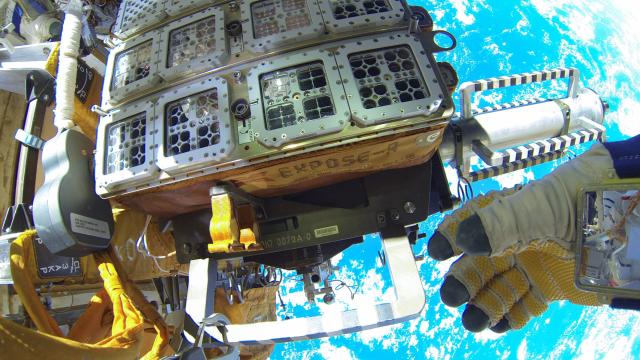Ever wondered how astronauts go about working out if organisms can survive the stresses of space? Largely by strapping them to the side of the International Space Station, that’s how.
In this image, you can see the European Space Agency’s Expose-R2 project. The unit, attached to the outside of the ISS, contains 46 species of bacteria, fungi and arthropods that were were delivered in July and will stay there for 18 months. The ESA describes the kind of conditions they will be exposed to:
The vacuum of space is sucking out the water, oxygen and other gases in the samples. Their temperature can drop to — 12°C as the Station passes through Earth’s shadow, rising to 40°C at other times, and undergoing a similar process to the freeze-drying used to preserve foods.
So, if they do survive, they’ll have done pretty well — and that’s without thinking about the blasts of solar radiation they will be exposed to. Not, perhaps, the ticket to space that many of us would like to receive. [ESA]
